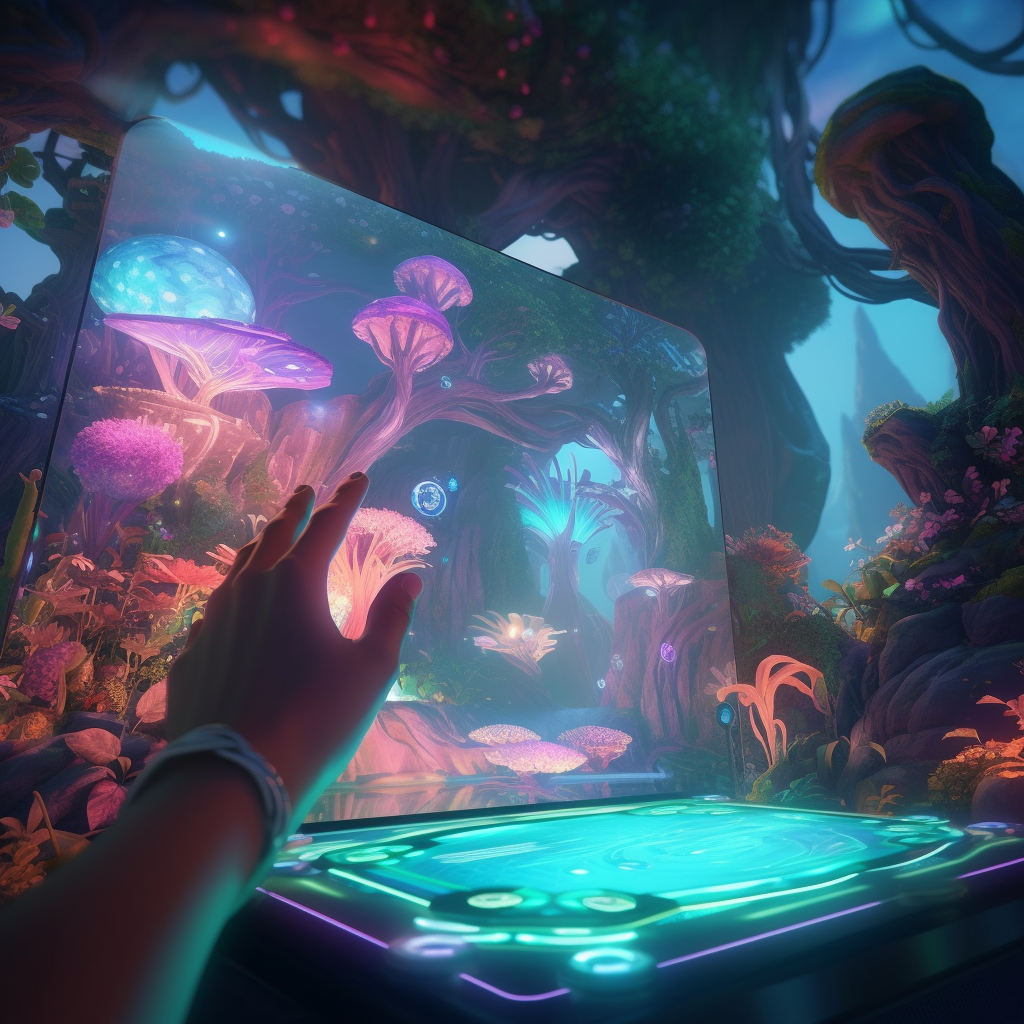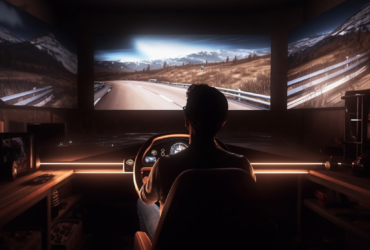In the ever-evolving world of video games, Project Playtime has quickly established itself as an engaging and immersive experience. As a unique offering within the gaming market, Project Playtime enthralls players with its innovative gameplay mechanics, compelling narrative, and visually striking aesthetics. Originally designed for PC gamers, it has won over many enthusiasts, earning widespread acclaim for its originality and engaging game dynamics.
Currently, Project Playtime is primarily available on PC platforms. The game’s design, which capitalizes on the specific strengths of PC gaming such as high-resolution graphics and keyboard-mouse control schemes, has been a hit among its core audience. The digital distribution platform, Steam, has been instrumental in its success, allowing the game to reach millions of players worldwide. The game’s compatibility with various PC hardware configurations also makes it accessible to a wide range of gamers, from those with high-end gaming rigs to those with more modest setups.
However, one question that often surfaces among the gaming community is: Will Project Playtime make the leap to consoles? As consoles like PlayStation, Xbox, and Nintendo Switch continue to dominate living rooms worldwide, the appeal of bringing Project Playtime to these platforms is undeniable. The possibility of expanding the game’s audience and introducing console players to the unique world of Project Playtime is a tantalizing prospect. So, is this a gamer’s dream or a soon-to-be reality? This article aims to explore this question in depth.
Project Playtime: An Overview
Project Playtime, an indie horror game, has quickly risen to prominence with its distinct gameplay, engaging features, and unique atmosphere. At its core, it’s a story-driven adventure, cleverly woven around the tale of a toy factory named “Playtime Co.” and its iconic toy, Poppy. As players navigate through the eerie factory, they encounter a variety of puzzles and challenges that require quick thinking and nimble reflexes. The game uses first-person perspective, further immersing players into its hair-raising horror experience. This fusion of thoughtful puzzle-solving and intense horror elements sets Project Playtime apart from its contemporaries.
The controls and mechanics of Project Playtime are fluid and intuitive, designed to work seamlessly on PC platforms. However, it’s not hard to envision how these mechanics might translate to consoles or even to mobile devices, offering an engaging play experience across various platforms. The prospect of “Project Playtime Mobile” or “Project Playtime Consoles” is certainly exciting to fans, and many have taken to the dedicated subreddit discussing the future of this intriguing game.
The game concept and features
Project Playtime’s current popularity is a testament to its success. Since its release in early access, it has seen a surge of players, drawn by the game’s inventive approach to the horror genre. The game’s subreddit is bustling with fans sharing their experiences, theories, and speculations about the game’s narrative and potential future expansions. The game’s ability to foster such an active community is a clear sign of its positive reception among players.
Despite being developed by a relatively small studio, Mob Entertainment, Project Playtime has managed to captivate a broad audience, demonstrating the power of indie games in today’s entertainment landscape. The game has been praised for its high-quality graphics, immersive sound design, and the sense of dread it instills in players. For many, it’s the horror game they didn’t know they wanted, and now they can’t get enough of it.
Whether you’re a fan of horror games or just an enthusiastic gamer, Project Playtime is a must-play. Its success has undoubtedly piqued the interest of console and mobile gamers, leaving many eagerly awaiting news of a potential release on these platforms. As we delve deeper into this article, we will discuss the likelihood of Project Playtime making the leap to Xbox, Playstation, and even Android and iOS.
The Console Gaming Landscape
The console gaming market has long been a dominant force in the world of digital entertainment. Platforms such as the Xbox Series, PlayStation 5, and Nintendo Switch have become household names, offering diverse gaming experiences to players of all ages. With the recent surge in demand for home entertainment, console gaming has seen a significant uptick in popularity. According to industry reports, millions of units are being sold annually, and the numbers are only expected to rise.
One of the key advantages of console gaming is the simplicity and accessibility it offers. Unlike PC gaming, which often requires players to adjust settings and update hardware to ensure optimal performance, consoles provide a plug-and-play experience that is appealing to many. Games designed for consoles are optimized for a specific set of hardware, ensuring consistent performance across all devices. Moreover, console gaming allows players to enjoy games on large screen televisions, often resulting in a more immersive gaming experience.
There are numerous examples of games that started on PC and later expanded to consoles due to their overwhelming popularity. A prime example is the horror game “Dead by Daylight,” which initially launched on PC and later made the leap to Xbox and PlayStation due to high demand. This transition not only expanded the game’s player base but also significantly boosted its visibility in the gaming community. Similarly, the possibility of Project Playtime making its way onto consoles like Xbox or PlayStation could open up new avenues for the game and its dedicated fanbase. The prospect of playing Project Playtime on a large screen, with the lights turned down low, is an enticing thought for fans of this horror experience. It’s a tantalizing possibility that could further cement Project Playtime’s status as a standout title in the indie gaming scene.
Project Playtime and Console Gaming: A Potential Match

Project Playtime, with its innovative gameplay mechanics, could potentially make a seamless transition to consoles. The game’s control scheme, which primarily involves exploring, interacting with the environment, and solving puzzles, could easily be adapted to a console’s controller layout. Analog sticks on a controller would offer smooth movement, while the multiple buttons could be used for various in-game actions. The immersive horror experience of Project Playtime might even be enhanced on consoles, as players could play in a dimly lit room, on a large screen, adding to the atmospheric horror of the game.
There are many potential benefits for Project Playtime if it were to expand to consoles. Firstly, it would significantly broaden the game’s audience, allowing console players who may not have a gaming PC to experience the game. Additionally, being available on consoles like Xbox, PlayStation, or even the Nintendo Switch could enhance the game’s visibility, potentially leading to increased sales and popularity. It would also provide existing fans with more ways to play the game, perhaps even sparking interest in a multiplayer experience for people to enjoy together.
However, the transition from PC to console is not without its challenges. One major hurdle would be the optimization of the game for different console hardware. Ensuring that the game runs smoothly and maintains its high-quality graphics on various consoles could require considerable time and resources. Furthermore, navigating the approval processes of different console platforms could also pose a challenge. However, given the game’s current success and the potential benefits of a console release, these challenges could be well worth overcoming. As we delve deeper into this article, we’ll further discuss the future of Project Playtime and the exciting possibilities that lie ahead.
Insights from the Developers
As of now, the developers of Project Playtime, Mob Entertainment, have not made any official announcements regarding a console release. However, they have been actively engaging with the fanbase and have hinted at their openness to exploring different platforms in the future. In various interviews and on their social media platforms, they’ve expressed their excitement about the game’s success and have shown a willingness to consider the demands of their rapidly growing community.
One particularly intriguing tidbit came from a recent AMA (Ask Me Anything) on the game’s dedicated subreddit. When a fan asked about the possibility of a console release, one of the developers responded, “We are listening to our players and considering all options for the future of Project Playtime. Stay tuned!” While this is far from an official announcement, it suggests that the idea of a console version is certainly on the table.
The community’s response to these hints has been overwhelmingly positive. Fans are excited at the prospect of playing Project Playtime on their favorite consoles and have been vocal in their support for a potential console release. Discussions about how the game’s controls might translate to a console controller, or how the horror experience might feel on a large TV screen, have dominated forums and social media. This level of engagement from the community not only shows their enthusiasm for Project Playtime but also highlights the potential success the game could have if it were to be released on consoles in the future.
Conclusion
Project Playtime’s potential expansion to consoles is a thrilling prospect. The move could open up new avenues for the game, expanding its audience, and offering an immersive horror experience to console players. The game’s unique gameplay and controls could translate well to console controllers, offering a seamless transition from the PC platform. However, there are challenges to consider, such as optimizing the game for different console hardware and navigating the approval processes of console platforms.
We encourage all readers to share their thoughts on this potential expansion. Would you like to see Project Playtime on your favorite console? How do you think the game’s horror experience would translate to a large TV screen? Your feedback and discussion could play a pivotal role in shaping the game’s future. As we conclude, we leave you with a thought-provoking question: How would the landscape of console gaming change if more successful indie games like Project Playtime started making their way onto consoles? Could this be the start of a new trend in the gaming industry?





Leave a Reply